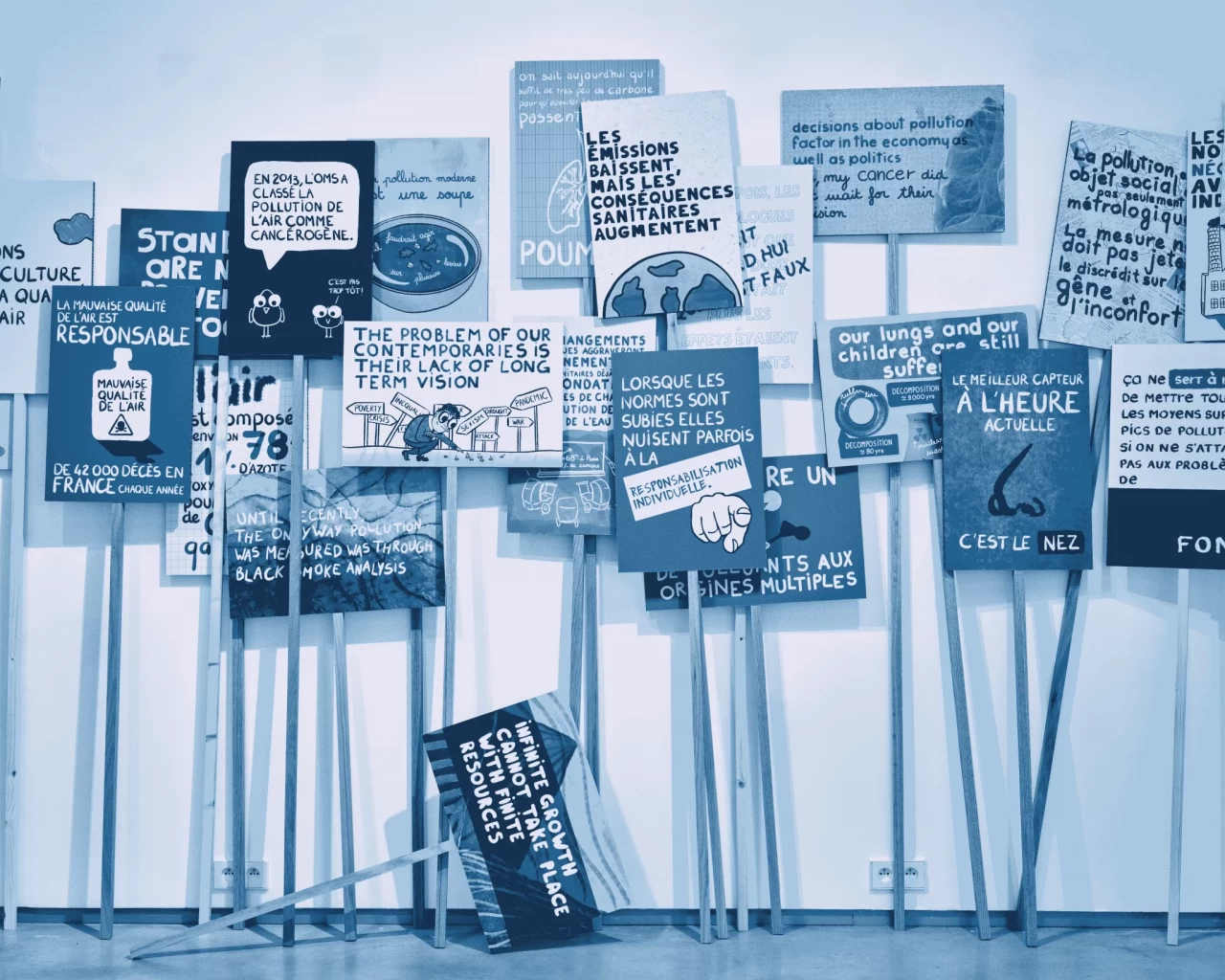Respire
Pour un design climatique
Breathing symbolizes our absolute dependence on the environment we live in. Breathing is such a natural act that we forget it is essential to every human being. Without oxygen, we could not survive.
How do we question our breathing?
How do we acknowledge breathing as part of our productive activities?
How can these activities become vectors of change in a committed shared effort? What are the environmental implications?
Based on sensory experiments, and in the context of the fight against pollution, the exhibition Respire, pour un design climatique offers answers to these questions by taking breathing as a paradigm of new ways of being and doing.
More broadly, Respire, pour un design climatique intends to raise awareness of an invisible resource that we must preserve at all costs: air.
Completed by quotations from the book Design et pensée du care,* the result of several research projects of the DMLab, the exhibition Respire, pour un design climatique is divided in three sections.
* Jehanne Dautrey (dir.), Design et pensée du care.
Pour un design des microluttes et des singularités,
Nancy/Dijon, Ensad Nancy/les presses du réel, 2018
WHAT DO WE BREATHE EVERY DAY?
In the vast atmosphere, I breathe the air inside my house, the air in my garden, on my street, in my city, in my village.
What air does each of us breathe? The study on air quality in different environments, carried out by the students of Ensad Nancy with individuals and professionals, shows that the air we breathe depends on our objects, our daily landscapes, and the products of our activities. It puts the focus on perception and personal experience as major factors in the appreciation of the quality of the 15m³ of air we breathe in every day.
HOW IS AIR QUALITY MEASURED?
From the first sensitive approaches developed at the end of the 21st century to the most contemporary digital tools, air quality measurement is now the subject of shared studies and analyses. Scientists and citizens share the same mission: to inform as many people as possible in order to promote new behaviours.
HOW CAN OUR PRODUCTIONS
AFFECT AIR QUALITY?
Cultivating air quality awareness can be a lever to change our habits and our relationship to the environment. To protect the environment, we must change our relationship with the material world, save renewable resources, reduce energy consumption, and pollute less. Changing our trajectory requires changing our way of life. Science has demonstrated this for years, but we are acting too slowly. What will it take to convince us? Where should we start?
Showcasing wicker objects designed by students and graduates of the design department of Ensad Nancy and produced by the basket makers of Fayl-Billot through a partnership with the CDPV, Committee for the development and promotion of basketry, or through the productions with hemp of students of the Idis (industry, design and social innovation) research chair of Esad de Reims, Graduate School of Art and Design of Reims, in association with Hear, Haute École des arts du Rhin, Respire, pour un design climatique aims to present possible answers, through design, and by the young generations of creators, to these situations.
In the Garden, presented at the entrance of the exhibition, productions of two graduates of Ensad Nancy enliven these proposals.
Several associated public events, a symposium, and Artem and cross-border masterclasses are being organized by Ensad Nancy and Esch2022 over the course of the exhibition.
Considering the materiality of our living contexts and atmospheric phenomena in object and spatial design has opened a new field of design, climatic design, in which air becomes a material, where flow modelling replaces solid geometry.
Whether it is approached with the most recent scientific concepts, with sophisticated technological tools or through traditional knowhow, the objective of climatic design remains the same: finding natural conditions that guarantee a symbiotic relationship between all living organisms and the rest of the world.
